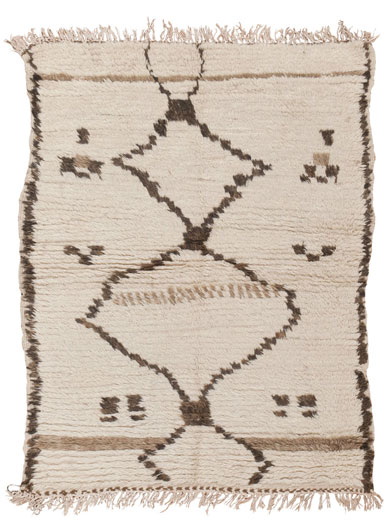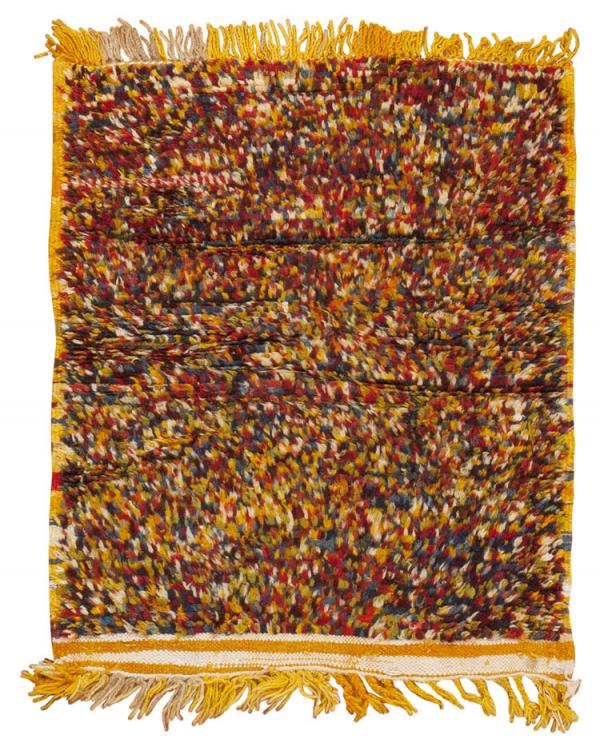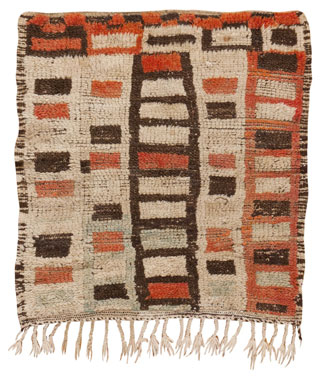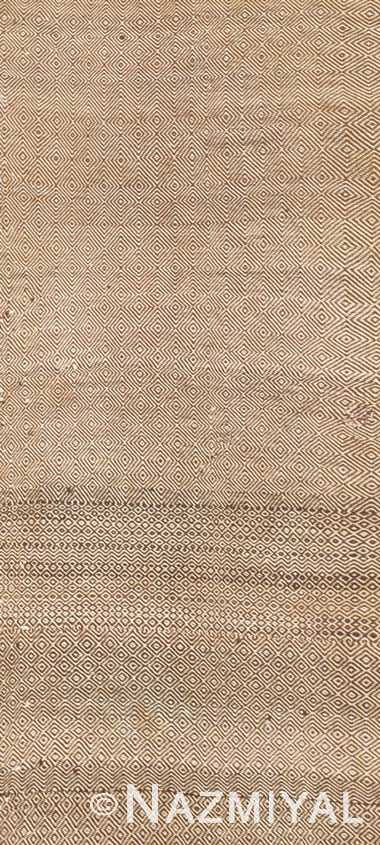I mean this post
to be exploratory and provocative. It is part of my effort to understand the
kinship of Moroccan rug making to the rest of the rug world and at the same
time to understand the differences.
Morocco and
Moorish Spain are significant in the Islamic rug producing areas in that they
were never under Turkic or Altaic rule. By this I mean they were never ruled by any of
the Turkish or Altaic dynasties such as the Mongols, the Seljuk or the Ottoman. Everywhere
else that I can think of in areas where Muslims produce rugs were at one point
or another ruled by a Turkic or in the case of the Mongols at least an Altaic
dynasty. Their strongest ties to the rest of the rug producing areas were in
the days of the strong independent Caliphate.
In 1258 Hulagu
the Mongol IL-Khan defeated Al-Musta'sim the last Abbasid Caliph, The independent
Caliphate existed from 632 until 1258 and died with Al-Musta'sim when the Mongols wrapped the Caliph in a rug and trampled him to death with horses.
After 1258 the Caliph was a political appendage
of first the Mamluk and then the Ottoman neither of whom were ever able to
exert their authority over Morocco or Moorish Spain. What this mean in rug terms was that the Moors
benefited early on from their commerce with the rest of the Caliphate but
maintained an independence that few other areas had.








